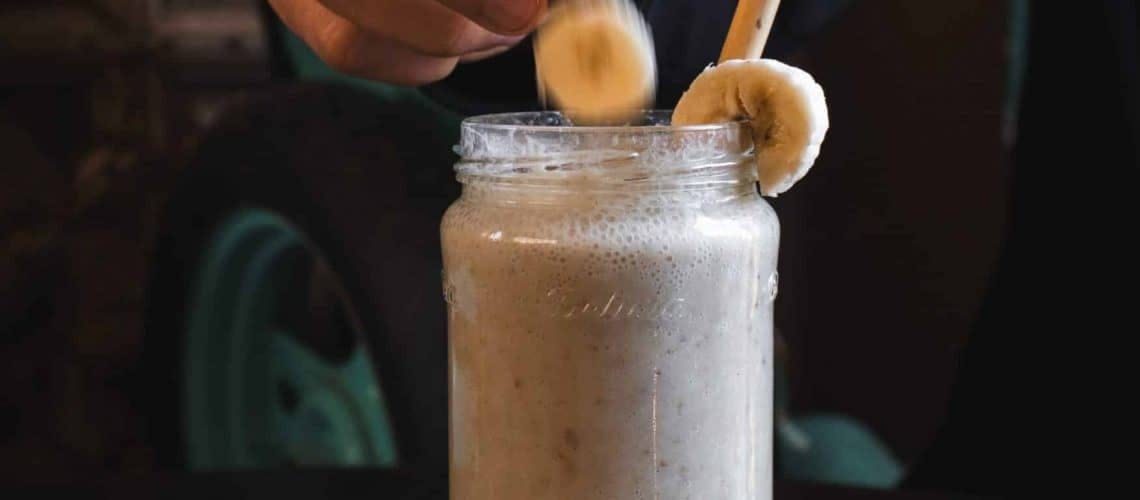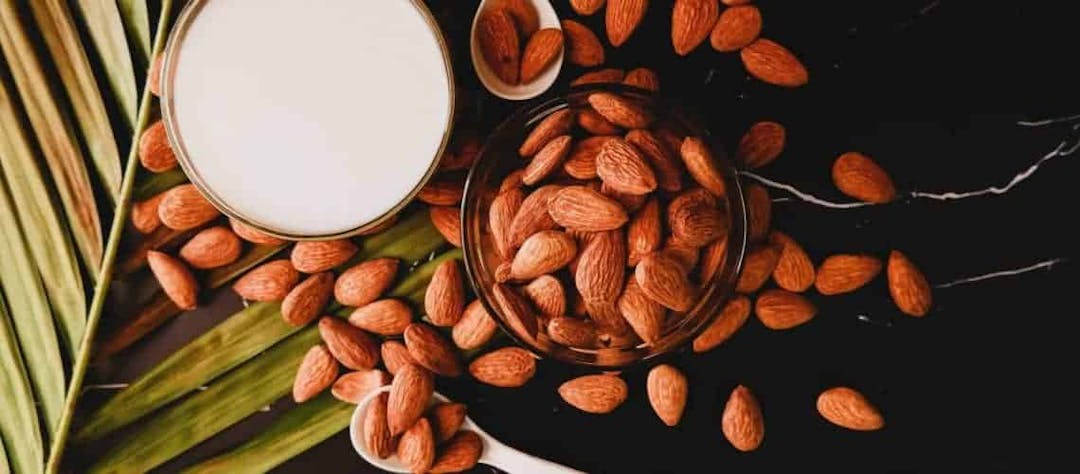


Find foods you can eat.
What’s the Difference Between Probiotics and Prebiotics?
Published on September 15, 2021Prebiotics and probiotics have received a lot of buzz because of their ability to promote a healthy gut microbiome. But what exactly do prebiotics and probiotics do to accomplish this, and what’s the difference between the two?
What are prebiotics and probiotics?
Prebiotics are substances found in certain foods that selectively feed beneficial microorganisms (mostly bacteria) in our colon and promote their growth. Prebiotics are indigestible, therefore they move through our GI tract largely unchanged. Once they make their way to the colon, our trillions of resident bacteria (along with other microorganisms) chow down. Beneficial bacteria prevent bad bacteria from taking over and play several important roles in our bodies when they grow and thrive.
Probiotics, on the other hand, are the actual live bacteria themselves that provide us with health benefits.
What foods contain prebiotics and probiotics?
Prebiotics
Prebiotics are typically found in fiber-containing foods, including (but not limited to):
- Apples
- Artichokes
- Asparagus
- Bananas
- Barley
- Beans
- Berries
- Chicory
- Dandelion greens
- Flaxseeds
- Garlic
- Jerusalem artichokes
- Leeks
- Legumes
- Mushrooms
- Oats
- Onions
- Potatoes
- Seaweed
- Wheat
While the majority of prebiotics are types of fiber found in plant-based foods, there are other types of prebiotics that are phytochemicals. Phytochemicals are special compounds produced by plants that often benefit our health when we consume them. Flavanols, a phytochemical found in cocoa, is one of the most widely studied non-fiber prebiotics. Flavanols in cocoa are thought to stimulate the growth of lactic acid bacteria, a type of bacteria linked to lower cholesterol levels, improved digestion of lactose, decreased risk for developing certain intestinal infections, and may even help to improve the nutritional value of the food that we eat. So if you’re a fan of dark chocolate, this is great news! The higher the percentage of cocoa in the chocolate, the more flavanols you’ll be feeding your good gut bacteria. Other phytochemicals with prebiotic properties include catechins, a type of polyphenol found in green tea.
Probiotics
Probiotics are found in supplements as well as fermented foods such as:
- Yogurt
- Kefir
- Kimchi
- Sauerkraut
- Tempeh
- Miso
- Natto
- Kvass
- Pickles
- Kombucha
- Raw honey
How are prebiotics and probiotics beneficial for our health?
Eating a combination of probiotic foods (which contain beneficial bacteria), and prebiotic foods (which contain food for these beneficial bacteria), will help to promote a healthy and diverse gut microbiome. Having more beneficial strains of bacteria populating the gut has been linked to reduced risk for developing a variety of health conditions including obesity, diabetes, cardiovascular disease, depression, allergies, and autoimmune diseases.
The main reason why probiotics are so beneficial is they produce special compounds, short-chain fatty acids, as a byproduct of eating prebiotics. Short-chain fatty acids are the main fuel source for the cells lining our colon, helping to keep the colon healthy and prevent junctions between colon cells from becoming loose or “leaky.” This is important because when the cell junctions between colon cells become loose, microscopic food particles, bacteria, and toxins can escape, triggering an immune reaction which then leads to inflammation. By nourishing our colon cells properly, we promote the integrity of our gut lining.
Short-chain fatty acids also have anti-inflammatory properties and communicate with our immune system so that it functions properly. Additionally, they help to prevent the development of colon cancer by promoting cell differentiation, stopping the growth cycle of certain types of colon cancer cells, and promoting cancer cell apoptosis, also known as “programmed cell death.”
Research demonstrates that short-chain fatty acids help to regulate our appetite and metabolism and promote healthy blood sugar levels, as those with more beneficial bacteria strains in their gut tend to have lower incidences of overweight, obesity, and diabetes compared to those with a less diverse gut microbiome, or fewer beneficial bacteria strains present. Further, short-chain fatty acids promote a healthy gut environment by preventing the growth of harmful bacteria. They even increase our body’s ability to absorb certain minerals like calcium. And as if the massive array of benefits provided by short-chain fatty acids weren’t enough, our good gut bacteria also produce certain vitamins for us, including B vitamins and vitamin K.
Who can benefit from eating more prebiotic and probiotic-rich foods?
Incorporating plenty of prebiotic and probiotic food sources into your diet is an excellent way to optimize overall health for most people. That being said, individuals who are severely immunocompromised should avoid consuming fermented foods. Fermented foods are not pasteurized, therefore they may lead to foodborne illness or infection in this population.
Those with small intestinal bacterial overgrowth (SIBO) should also avoid eating fermented foods or taking probiotic supplements, as they may worsen the condition. Additionally, those who are sensitive to histamines may need to avoid fermented foods since they are high in histamine.
Lastly, those with irritable bowel syndrome (IBS) may experience unpleasant GI symptoms after consuming certain prebiotic-rich foods. This is because gut bacteria produce gas as a byproduct of fermenting prebiotics. Those with IBS have increased gut sensitivity (also referred to as “visceral hypersensitivity”), so they may experience discomfort and bowel irregularities after consuming some of these foods.
If prebiotic-rich foods are gradually incorporated in small quantities over time, however, gut bacteria will adjust and GI symptoms may improve.
Food sources vs. supplements
While it is possible to obtain both prebiotics and probiotics through supplements, it is not necessary to take these supplements to be healthy. It’s always best to lean on food sources first whenever possible.
The gut microbiome is still a new area of research. Until we fully understand what an “ideal” gut microbiome looks like or exactly what each bacterial strain does for our health, it is difficult to recommend a specific supplement and dosage with certainty that it will be efficacious for you.
Taking a probiotic supplement is not quite as simple as picking up a generic multivitamin at your local drugstore, as everyone’s gut microbiome is unique and responds differently. To help figure out if you may benefit from a probiotic supplement, check out the Alliance for Education on Probiotics website, where evidence-based probiotic guidelines for specific health conditions are listed.
When it comes to prebiotic supplements, those with certain GI conditions, diabetes, or high cholesterol may benefit, but if you are eating a healthy diet rich in a variety of plant-based foods, these may not be necessary.
As always, before beginning a new supplement, it’s best to speak with your healthcare provider to be sure that it’s appropriate and safe for you to do so.
Tips for incorporating more prebiotics and probiotics into your diet
Luckily, there are many easy (and tasty) ways to incorporate prebiotics and probiotics into your diet. One of the easiest ways to include multiple prebiotic sources into your day is to make a smoothie.
Blend up the following to make one of my favorite gut-friendly smoothies:
- 1 frozen banana,
- 1 tablespoon of ground flaxseed
- 1 tablespoon of cocoa powder
- ½ a cup of plain kefir
- ½ a teaspoon of raw honey
- ½ a cup of unsweetened almond milk to blend
Your good gut bacteria will thank you!
Soups are great opportunities to incorporate prebiotic-rich beans, legumes, and vegetables into your diet. Lentil, minestrone, and potato leek soups are a few options sure to feed your good gut bugs.
To instantly up the prebiotic content of any meal, not to mention the flavor, add sauteed garlic and onion to whatever you’re cooking. If you’re following the low FODMAP diet elimination phase or are sensitive to fructans in garlic and onion, try sauteing the green leafy parts of scallions and onions instead, for a similar effect. And for a probiotic boost, consider sipping on kombucha as a midday pick-me-up and adding sauerkraut to salads, sandwiches, and wraps. Incorporating miso into salad dressings and sauces will instantly add probiotics, like in this tasty Miso Tahini Sauce recipe developed by UMass Medical School Center for Applied Nutrition. Lastly, try swapping meat for tempeh, a plant-based protein source made from fermented soybeans that’s packed with probiotics.
For additional help and specific recommendations for incorporating prebiotic and probiotic-rich foods into your diet, it can be helpful to work with a registered dietitian. Taking your dietary needs and restrictions into consideration, they will help you figure out the types of prebiotic and probiotic-rich foods that are suitable for you. They may also help you decide whether or not a supplement is appropriate for you.
Summary
Probiotics are live bacteria that benefit our health. Prebiotics are substances found in certain foods that feed our beneficial gut bacteria.
Eating a diet rich in prebiotic and probiotic food sources is an effective way to improve your overall health. While supplements may be useful for certain individuals, they are likely not necessary for the average person. To reap the benefits of your good gut bacteria, it’s best to focus on incorporating plenty of fruits, vegetables, whole grains, beans, legumes, nuts, seeds, and fermented foods into your diet.
Have you tried the Fig app? Fig helps you find food that fits all your unique dietary needs. Search and scan foods to see if they work for you and your family!
 Guide to Trying Foods that are Untested for FODMAPs
Guide to Trying Foods that are Untested for FODMAPs How to Incorporate Calcium on a Dairy-Free Diet
How to Incorporate Calcium on a Dairy-Free Diet